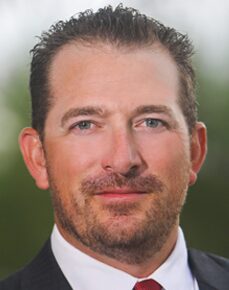How to Get Your Demonstratives Admitted as Evidence
One of the biggest mistakes I have seen during my years as a trial lawyer is attorneys who do not understand the rules of evidence. Understanding your state’s rules of evidence or the federal rules of evidence is critical leading up to and conducting the trial. As a young attorney, I primarily did criminal defense work, and as a criminal defense attorney, I learned at a very young age that the rules of evidence may be the only thing standing between a guilty and a not guilty verdict. I had the privilege of working with two of the best criminal defense attorneys in Nevada, and one of them, Dominic Gentile, is widely regarded as one of the top white collar criminal defense attorneys in the country. Dominic’s knowledge of the rules of evidence, to this day, still astounds me, and I regularly call Dominic any time I have an evidentiary question. I tell you this story because when it comes to your cases, you need to be sure you can lay the proper foundation to get your evidence into trial. For example, in my last trial, we went through each piece of evidence we knew we had to get admitted and we determined which witness could lay the foundation, and what the foundation would be. Additionally, if there were any likely objections on hearsay or other grounds, we put together our evidentiary responses, such as a list of exceptions to hearsay objections that applied to each piece of evidence.
When it comes to your animations or medical illustrations, it is critical to have your experts involved in the process of creating them. I have seen other companies create medical illustrations that the attorneys think look great, but then they get to trial and their experts say the medical illustration is not medically accurate. Obviously, if this happens, you cannot show the medical illustration at trial. It is also important to understand what your goal of the illustration or animation is – are you using it for demonstrative purposes or are you actually trying to get it admitted as a piece of evidence. If the goal is to use the medical illustration or animation for demonstrative purposes, the court is much more likely to allow your experts to explain to the jury what the illustration or animation is showing. Once you make the decision to move for the admission of a medical illustration or animation, you need to ensure your experts have laid the proper foundation. For example, if you want to show an animation of how the event took place, let’s say a car wreck, then you need to have the proper expert (accident reconstruction expert, human factor expert, etc.) lay the foundation for the animation. When you have the proper experts prior to hiring an animation company, it really helps ensure the accuracy of the animation, and thus, the likelihood of the animation being admitted into evidence goes up as well.
The last thing you want to do is spend thousands of dollars on an animation, only to find it inadmissable after the fact. The bottom line is very simple, you need to know the rules of evidence and you need to have the proper experts to lay the foundation for your animations and illustrations.
By Sean Claggett
Sean Claggett, founding partner of Claggett & Sykes Law Firm, is one of the most successful trial attorneys in the country. A 2003 graduate of UNLV’s William S. Boyd School of Law, Sean was honored as Alumni of the Year by the Boyd School of Law in 2010; has been recognized by Legal Aid of Southern Nevada for his Pro Bono work; and was selected by his peers as Nevada Trial Lawyer of the Year in 2017. Sean was also named to Courtroom View Network’s 2020 “Who We’re Watching” list and currently serves as an adjunct professor in Law Practice Management at UNLV Boyd School of Law. He is frequently sought after to consult or join as co-counsel on cases proceeding to trial due to his extensive experience and success at trial.

Let us bring your case to life…..
Our team of animators, illustrators and medical professionals are ready to make your demonstratives ready for your next mediation or litigation. Click on the link below or give us a call (702) 849-0090.
